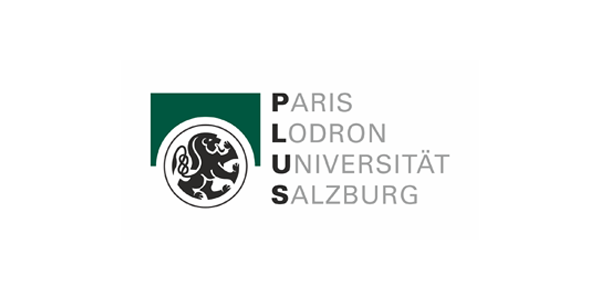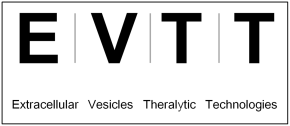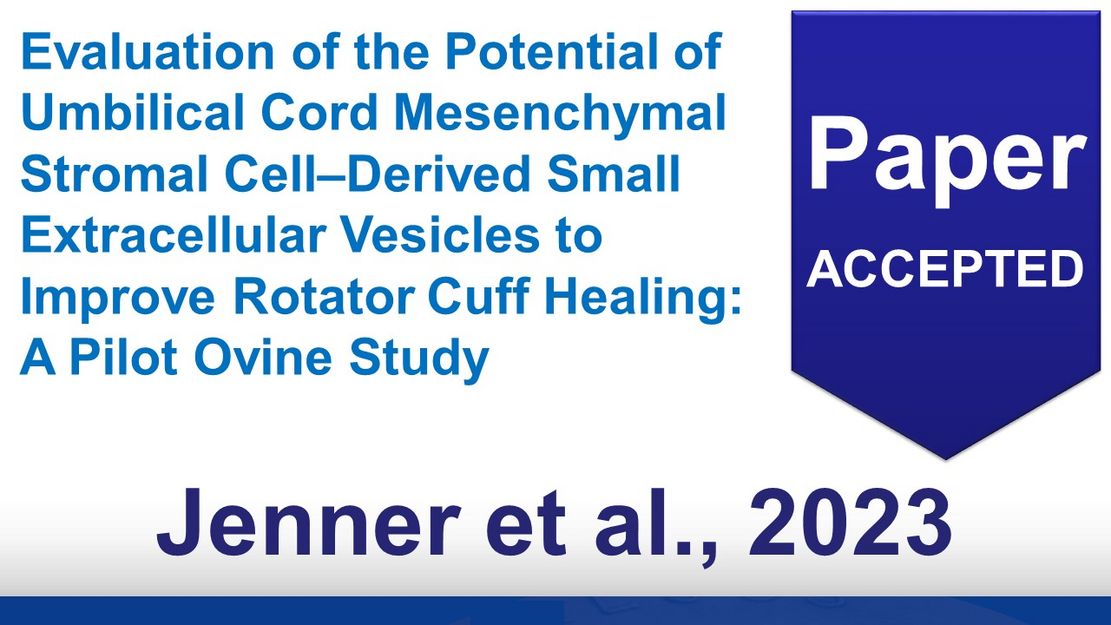Evaluation of the Potential of Umbilical Cord Mesenchymal Stromal Cell–Derived Small Extracellular Vesicles to Improve Rotator Cuff Healing: A Pilot Ovine Study
Background:Despite significant advancements in surgical techniques to repair rotator cuff (RC) injuries, failure rates remain high and novel approaches to adequately overcome the natural biological limits of tendon and enthesis regeneration of the RC are required. Small extracellular vesicles (sEVs) derived from the secretome of human multipotent mesenchymal stromal cells (MSCs) have been demonstrated to modulate inflammation and reduce fibrotic adhesions, and therefore their local application could improve outcomes after RC repair.
Purpose: In this pilot study, we evaluated the efficacy of clinical-grade human umbilical cord (hUC) MSC-derived sEVs (hUC-MSC-sEVs) loaded onto a type 1 collagen scaffold in an ovine model of acute infraspinatus tendon injury to improve RC healing.
Study Design: Controlled laboratory study.
Methods: sEVs were enriched from hUC-MSC culture media and were characterized by surface marker profiling. The immunomodulatory capacity was evaluated in vitro by T-cell proliferation assays, and particle count was determined by nanoparticle tracking analysis. Twelve skeletally mature sheep were subjected to partial infraspinatus tenotomy and enthesis debridement. The defects of 6 animals were treated with 2 × 1010 hUC-MSC-sEVs loaded onto a type 1 collagen sponge, whereas 6 animals received only a collagen sponge, serving as controls. Six weeks postoperatively, the healing of the infraspinatus tendon and the enthesis was evaluated by magnetic resonance imaging (MRI) and hard tissue histology.
Results: CD3/CD28-stimulated T-cell proliferation was significantly inhibited by hUC-MSC-sEVs (P = .015) that displayed the typical surface marker profile, including the presence of the MSC marker proteins CD44 and melanoma-associated chondroitin sulfate proteoglycan. The local application of hUC-MSC-sEVs did not result in any marked systemic adverse events. Histologically, significantly improved Watkins scores (P = .031) indicated improved tendon and tendon-to-bone insertion repair after sEV treatment and lower postcontrast signal of the tendon and adjacent structures on MRI suggested less residual inflammation at the defect area. Furthermore, the formation of osteophytes at the injury site was significantly attenuated (P = .037).
Conclusion: A local, single-dose application of hUC-MSC-sEVs promoted tendon and enthesis healing in an ovine model of acute RC injury.
Clinical Relevance: Surgical repair of RC tears generally results in a clinical benefit for the patient; however, considerable rerupture rates have been reported. sEVs have potential as a cell-free biotherapeutic to improve healing outcomes after RC injury. [get the paper]












